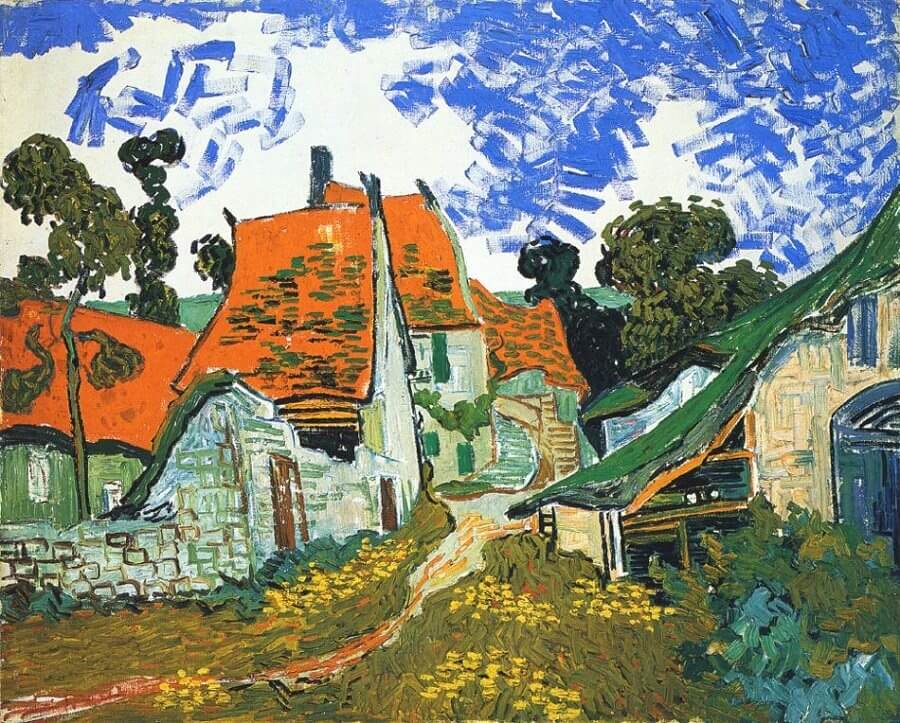Village Street in Auvers, 1890 by Vincent Van Gogh

In May 1890 Van Gogh finally left the asylum at Saint-Remy and traveled north to Paris to see Theo for a few days before moving on to the small community of Auvers-sur-Oise, which would be his home for the remaining few months of his life. It was a rural village full of traditional old farm cottages, many of which were thatched and sat on unpaved dirt roads that wended their wag amongst the buildings. It was spring, Van Gogh's most positive time of year, and on his arrival, he was initially taken with the small town describing it as being, 'of grave beauty, the real countryside, characteristic and picturesque'.
This was one of several views of the streets of Auvers that Van Gogh painted, and shows his use of the outline to clarify and simplify the various forms. His palette though still bright was marked by a 'muddiness' of tone that resulted in an earthly quality in the colours. He has used areas of flat colour, then enlivened and added texture to the surface through controlled brushwork, particularly evident in the bricks of the wall and the pan-tiled roofs.




















